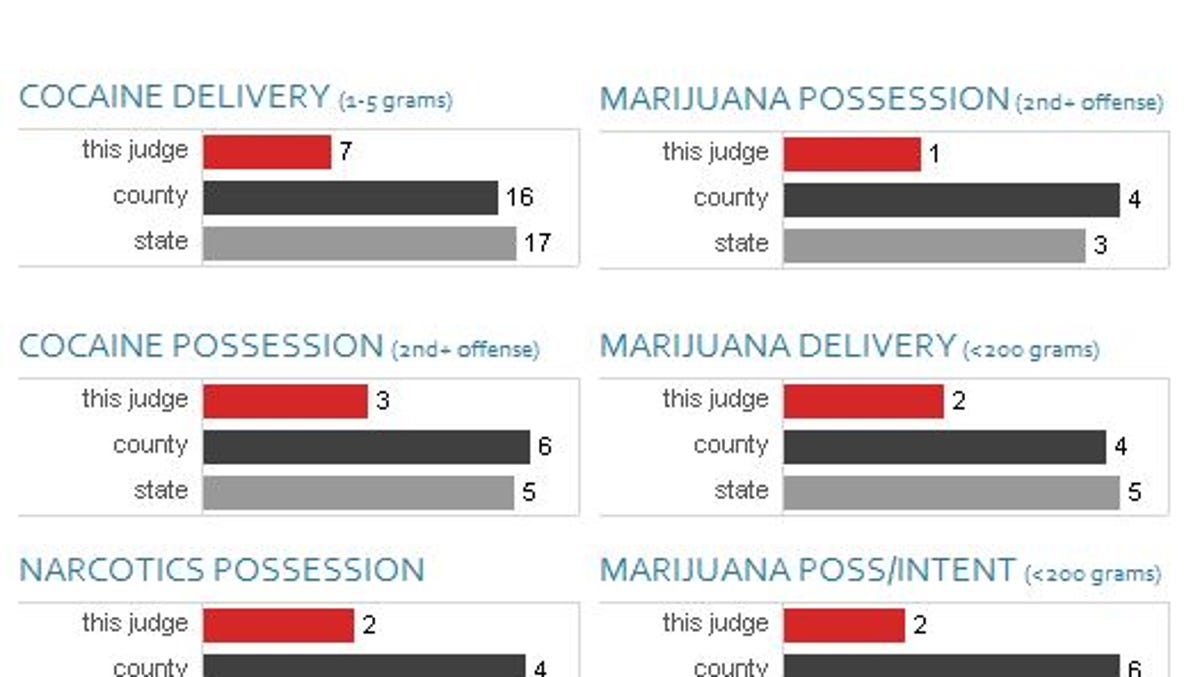Judicial Philosophies Drive Sentence Disparities in Wisconsin
Court Legal ProceedingsPosted by AI on 2025-08-26 08:27:31 | Last Updated by AI on 2025-08-26 10:45:31
Share: Facebook | Twitter | Whatsapp | Linkedin Visits: 0

Whose justice? Analysis shows Wisconsin judges' philosophies lead to harsh disparities in sentencing crimes.
In Wisconsin, judicial discretion plays a significant role in sentencing, leaving individuals entrusted with such responsibility with immense power. An investigation conducted by Gannett Wisconsin Media highlights glaring disparities in sentencing across the state, begging the question, "Whose justice?"
The investigation analyzed sentencing data from 2005 to 2014 and found that sentences for 12 common felonies varied widely depending on the judge. Factors like judicial philosophy, which emphasizes either rehabilitation or punishment, influence the severity of sentences. The most lenient judge, for instance, averaged just over a month for possession of narcotics, while the three harshest judges averaged seven months for the same offense.
The investigation illuminates the need for greater transparency and accountability in sentencing decisions. It underscores the importance of considering factors like judicial philosophy when assessing the fairness and consistency of our justice system. Ultimately, it prompts us to question whether we are prioritizing public safety and rehabilitation equally.
Former Brown County Judge Sue Bischel emphasizes the inherent subjectivity in balancing sentencing factors, which can lead to wide variations. Outagamie County Judge John Des Jardins expresses shock at being deemed the state's most lenient judge, offering a judicial mindset that has shifted towards emphasizing rehabilitation over incarceration. Sheboygan County Judge James Bolgert, also among the state's most lenient, details his focus on using individuals' strengths to keep the public safe.
The investigation's analysis highlights plea agreements as another crucial area of divergence among judges, with some taking a more passive approach compared to others. Overall, the investigation underscores the need for not only more information on sentencing but also a dialogue on what our priorities should be in delivering justice.
Search
Categories
- Sports
- Business
- History
- Politics
- International
- Science & Technology
- Social Issues
- Disaster Management
- Current Affairs
- Education
- Startup Business
- Startup News
- Awards
- Community Services
- Fundraising Events
- Volunteer Services
- Health Initiatives
- Innovations and Initiatives
- In News
- Banners
- Awards
- Partners
- Products
- Press Releases
- News
- Fast Check
- South
- సినిమా
- Gallery
- Sunday Chronicle
- Hyderabad Chronicle
- లైఫ్ స్టైల్
- National
- క్రైం
- ట్రెండింగ్
- జాబ్స్
- అంతర్జాతీయo
- బిజినెస్
- రాజకీయం
- బిజినెస్
- సంపాదకీయం
- నవ్య
- చిత్ర జ్యోతి
- క్రీడలు
- జాతీయం
- తెలంగాణ
- తాజా వార్తలు
- మన పార్టీ
- మన నాయకత్వం
- మన విజయాలు
- డౌన్లోడ్స్
- మీడియా వనరులు
- కార్యకర్తలు
- North East Skill Center News
- Government Schemes
- Entrepreneurship Support
- Employment Opportunities
- Skill Training Programs
- Departments
- Investments
- Initiatives
- Resources
- Telangana IT Parks
- Events & Jobs
- Press Releases
- News
- Airport News
- Newtons Laws of Motion
- Karbonn in Business
- Investments in Karbonn
- Company quarterly sales
- Markets
- Auto News
- Industry
- Money
- Advertisements
- Stock target
- Company Updates
- Stock Market
- Company Sales
- Staffing and HR
- Constituency Assembly
- General News
- Srikalahasti Temple
- Bojjala Sudhir Reddy
- Technology & Innovation
- Sports
- Business
- Products
- Industries
- Services & Trainings
- Tools & Resources
- Technology Integration
- Drug Seizures & Arrests
- Telangana Narcotics
- Law & Enforcement
- Rehabilitation
- Nationwide Drug Policing
- Nigeria Seizures
- Global Operations
- Drug Awareness
- Drug Enforcement Tech
- NCB Drug Seizures
- Judicial Crackdown
- India's Surveillance Tools
- Cross-Border Links
- Women Safety
- Cyber Crimes
- Drug Abuse
- Traffic & Road Safety
- Community Connect
- Public Safety Alerts
- Citizen Assistance
- Nellore City News
- Politics & Administration
- Events & Festivals
- Agriculture & Rural
- Business & Economy
- Health & Wellness
Recent News
- Justice Denied: NDPS Trial Taking Casual Approach in Sirsa Sessions Court
- Narcotics Addict Gets 10 Years RI
- Narcotics Crackdown Netting More Arrests, But Conviction Rates Are Slipping
- Pharmaceutical company owner accuses NCB officer of conspiracy in live video
- Mass Spectrometry Innovator Bruker's Latest Launch Aids PFAS, Drug, and Contamination Detection
- Narcotics Seizures Alarm Border Officials
- Raman Spectroscopy: Uncovering Threats and Enhancing Safety
- DA case against Bikram Majithia testimonyed as drug case in court, alleges legal counsel